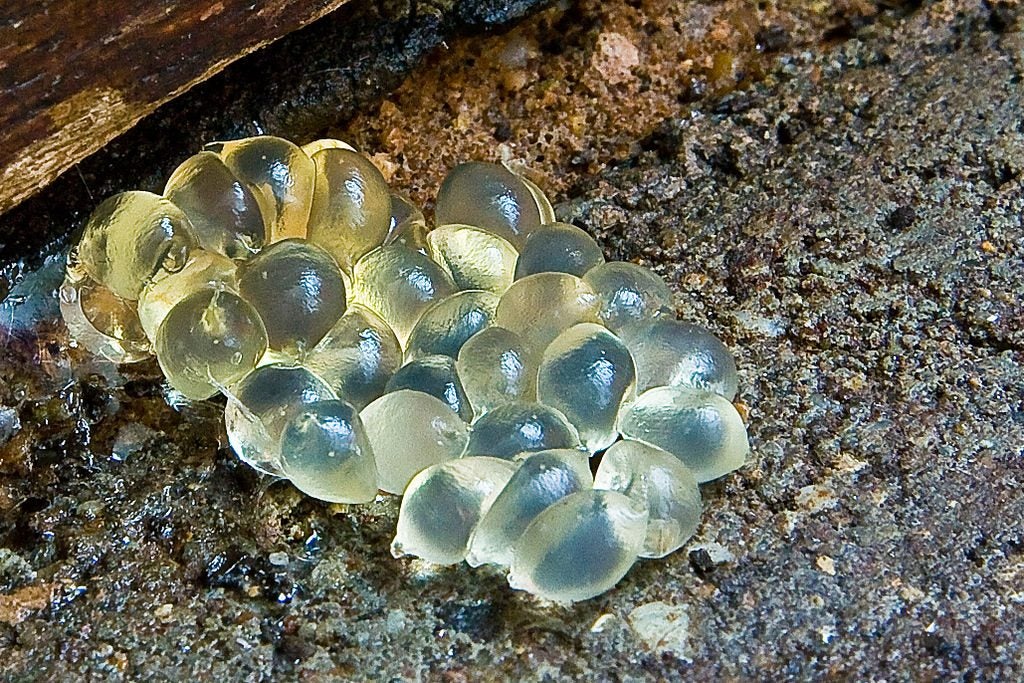Snail/Slug Egg Treatment: What Do Slug And Snail Eggs Look Like


Snails and slugs are two of a gardener's worst enemies. Their feeding habits can decimate the vegetable garden and ornamental plants. Prevent future generations by identifying eggs of slugs or snails. What do slug and snail eggs look like? Read on to examine these amazing, but annoying, slimy creatures and learn how to get rid of slug/snail eggs.
What Do Slug and Snail Eggs Look Like?
We've all seen it. The telltale trail of slime over rocks, pavement, house siding and any exposed areas. Slugs and snails are mostly active at night and hide under rocks and debris during the day. They can be difficult to eradicate because they are good at hiding, but their feeding activity is unmistakable. Snail egg identification and destruction is a good start to saving your leafy greens and other tasty plants. Snail and slug eggs in gardens are often laid on the surface of the soil and usually covered by leaf litter or other organic debris. They are coated with a slimy substance that is slightly gummy. The eggs are slightly gelatinous and of no perfect shape. Sometimes they are laid on vegetation but usually are harder to spot when laid on soil. Look for brownish-gray, slimy bundles when identifying eggs of slugs or snails. The eggs hatch in approximately a month and begin to feed immediately, reaching adulthood in three to five months. A flashlight is a good tool for snail egg identification. Be sure to check under leaves, too, as both animals can cling to almost any surface.
How to Get Rid of Slug/Snail Eggs
Snails and slugs require moist conditions and avoid bright areas. Begin by cleaning up around the yard and home. Rake up piles of organic matter, lift wood off the ground, and pick up items that will provide shelter for the slimy animals. Rake and turn over the soil in areas that have been untouched. Scrape off any egg blobs you might encounter, which will prevent a second generation of the pests from nibbling away at your plants. Snail and slug eggs in gardens can be very difficult to find and there is no way you can find them all. Then it's on to Step 2, which is combating the adults themselves.
Adult Snail and Slug Control
There are many slug baits on the market that are effective in controlling the pests. You can also go out at night and hand pick them. Destroy them by plopping them into bucket of soapy or salty water. The animals are cumbersome to pick up so use a trowel or even chopsticks. Leave fruit rinds or vegetable pieces out for the slug or snail to come out and eat, then simply throw them away while they are dining. They are also attracted to wet pet food. If you don't want to go to all this trouble, line any bed where you have sensitive plants with copper tape. You can also sprinkle diatomaceous earth, crushed eggshells or other scratchy things to repel them. If all else fails, get some animals that love to eat snails and slugs. A pair of ducks or a flock of chickens will help keep your garden free of these pests. Note: Any recommendations pertaining to the use of chemicals are for informational purposes only. Chemical control should only be used as a last resort, as organic approaches are safer and more environmentally friendly.
Gardening tips, videos, info and more delivered right to your inbox!
Sign up for the Gardening Know How newsletter today and receive a free copy of our e-book "How to Grow Delicious Tomatoes".

Bonnie Grant is a professional landscaper with a Certification in Urban Gardening. She has been gardening and writing for 15 years. A former professional chef, she has a passion for edible landscaping.
-
 Looking For Plants To Give You The Soft And Fuzzies? Try These 5 Fuzzy Leaf Plant Options
Looking For Plants To Give You The Soft And Fuzzies? Try These 5 Fuzzy Leaf Plant OptionsLovers of texture, drama, silver foliage and tactile plants will adore these special sensory garden additions. These fuzzy leaf plant options will leave you all aglow
By Susan Albert
-
 Get Ready For A Summer Of Hummers! Grow These Full Sun Hummingbird Plants and Flowers
Get Ready For A Summer Of Hummers! Grow These Full Sun Hummingbird Plants and FlowersIf you’re lucky enough to enjoy a sunny backyard, make sure you are maxing out on your pollinator opportunities and grow these full sun hummingbird plants and flowers
By Tonya Barnett